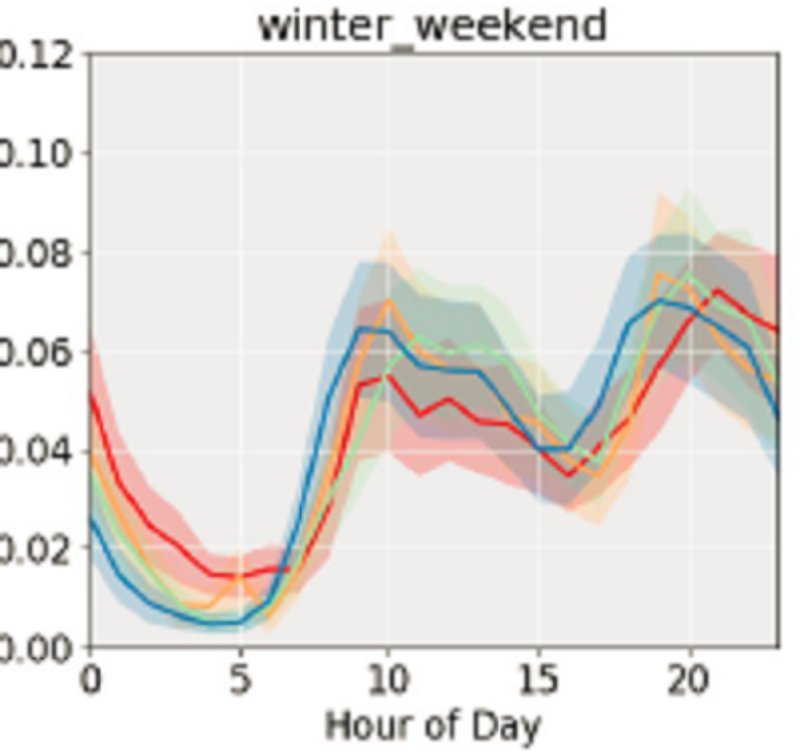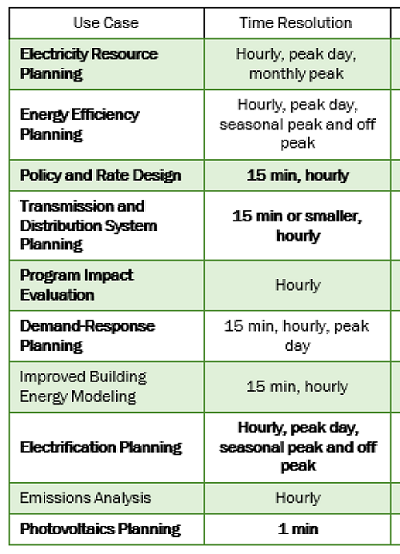

By Elizabeth Titus | Fri, January 17, 20
These days in the energy world, meters are getting a lot of media exposure. With spot meters, smart appliances, building management systems, utility billing meters, and smart meters (which are also known as advanced metering infrastructure or AMI), the energy industry may start drowning in data. And yet, people are asking: do we have enough?
Meters Matter
So why do meters matter? Meters are the instruments used to track how much and at what times we consume energy. They can be blunt instruments recording usage at hourly intervals. They can be super-precise highly sophisticated “smart” machines, measuring at intervals that are a matter of seconds and enabling two-way communication between customers and utilities, or product manufacturers in the case of appliances.
Either way, they can produce adata stream that depicts the pattern of energy consumption over time, or load profile, for each customer. As an example, the image below shows a winter weekend day in the life of a residential dishwasher based on averages of customers’ load profiles from four different states, represented by the four lines. Not surprisingly, dishwasher use peaks around dinner time, after dinner, and around breakfast time.

And metering data and load profiles are among the holy grails for many stakeholders in the energy industry. They are important for a variety of reasons. Here is a list of some of the key activities that are informed by, or dependent on load profiles:

Learning from Load Profiles
As it turns out, few accurate and accessible end use load profiles are available for the broad stakeholder audience (public utility commissions, state energy offices, utilities, policy advocates, and environmental planners) to use. The good news is that demand for those end use load profiles is growing. The profiles can help prioritize investment and value energy efficiency, demand response, distributed generation, and energy storage. They are critical for widespread adoption of grid-interactive efficient buildings. The value of all these programs is time-sensitive, and are important considerations when designing programs that support decarbonization.
NEEP is involved in two projects – one national, one regional – intended to help meet the growing demand for end use load profiles.
The End Use Load Profiles for the U.S. Building Stock (national project funded by U.S. Department of Energy)
By the end of 2021, this project will produce a set of highly resolved end use load profiles of the U.S. residential and commercial building stock. National labs, primarily National Renewal Energy Laboratory (NREL) and Lawrence Berkeley National Laboratory (LBNL), are working on this with assistance from a group of technical advisors. The profiles will be developed using calibrated building energy models (ResStock and ComStock) that also incorporate models of occupant behavior. They will will be produced for different climate zones and building types as well as end uses and whole buildings.
This approach requires a fraction of the cost of developing statistically-representative submetering efforts. This effort leverages data from existing sources and relies on a sweeping effort to assemble inputs to the modeling and model calibration process. Metering data from existing sources – end-use level and whole building level – is one of the key ingredients of this approach. The calibrated building energy models can be used for “what if” policy and technical analysis. At the end of this process, the profiles, the calibrated models, and a user guide will be publicly available.
Northeast Regional Loadshape Project End Use Load Profiles for Residential and Commercial Building Stock,(regional project funded by Massachusetts Clean Energy Center Amplify MA program and NYSERDA)
NEEP recently launched a project that supplements and complements the national project. Two key tasks are as follows:
- Assess regional key end use load profile data needs, gaps, and research priorities, with a focus on Massachusetts and New York; and
- Develop a brief on data sharing best practice examples and recommendations.
In conjunction with these activities, NEEP is participating on the national technical advisory group and convening a regional advisory group to facilitate information exchange and inform the regional loadshape data needs. The group represents utilities, system operators, and stakeholders from energy efficiency, demand response, private and public sector interests. Near-term outcomes from this project include updating NEEP’s repository of evaluation studies and determining priority recommendations for possible future research.
Benefiting from the Bytes
Why are these projects so important to our region? Northeast states lead the nation in energy efficiency policies, and most have adopted aggressive carbon emission reduction goals for 2030 and beyond. Increasingly, states include strategic electrification for “carbon efficiency” in ratepayer-funded energy efficiency programs along with integrating distributed energy resources to respond to electric grid reliability needs for flexible loads. These policy goals affect approaches to program design and to corresponding evaluation, measurement, and verification (EM&V). Massachusetts and New York are among the high achievers with respect to establishing aggressive goals. In fact, Massachusetts is widely recognized for its comprehensive program evaluation practices for energy efficiency programs. Now, these states are taking a stand to better equip themselves in meeting their goals. In short, the region needs to know how buildings perform in order to deliver strategies that optimize those buildings for grid efficiency and carbon efficiency. The region needs load profiles to figure out what and whenloads will be flexible.
Do we have enough data? Enough meters? In my opinion the answer is not yet. On the whole building side, the Northeast has lower penetration of AMI relative to other regions, and there are various barriers that limit additional rollouts. The collection of load profile information about some highly relevant emerging end uses like charging stations and heat pumps through spot metering is still in early stages and takes time. In territories where AMI data is available, we know that companies rarely take full advantage of the opportunities it presents due to institutional barriers. Similarly, while the data collected through smart appliances may be abundant, its use is limited. Data sharing is one key challenge across the board. Data, data everywhere and not a byte to analyze.
The national end use load profile project is providing an elegant strategy to make the most of what data can be made available. It is demonstrating a pathway forward to enable development of additional end use profiles that can make the most of studies of emerging uses. NEEP, Massachusetts, and New York are working together and ready to help our region hop onto that pathway. We remain hopeful that the changing energy landscape will ultimately bring further ways to make the most of current and future metering.